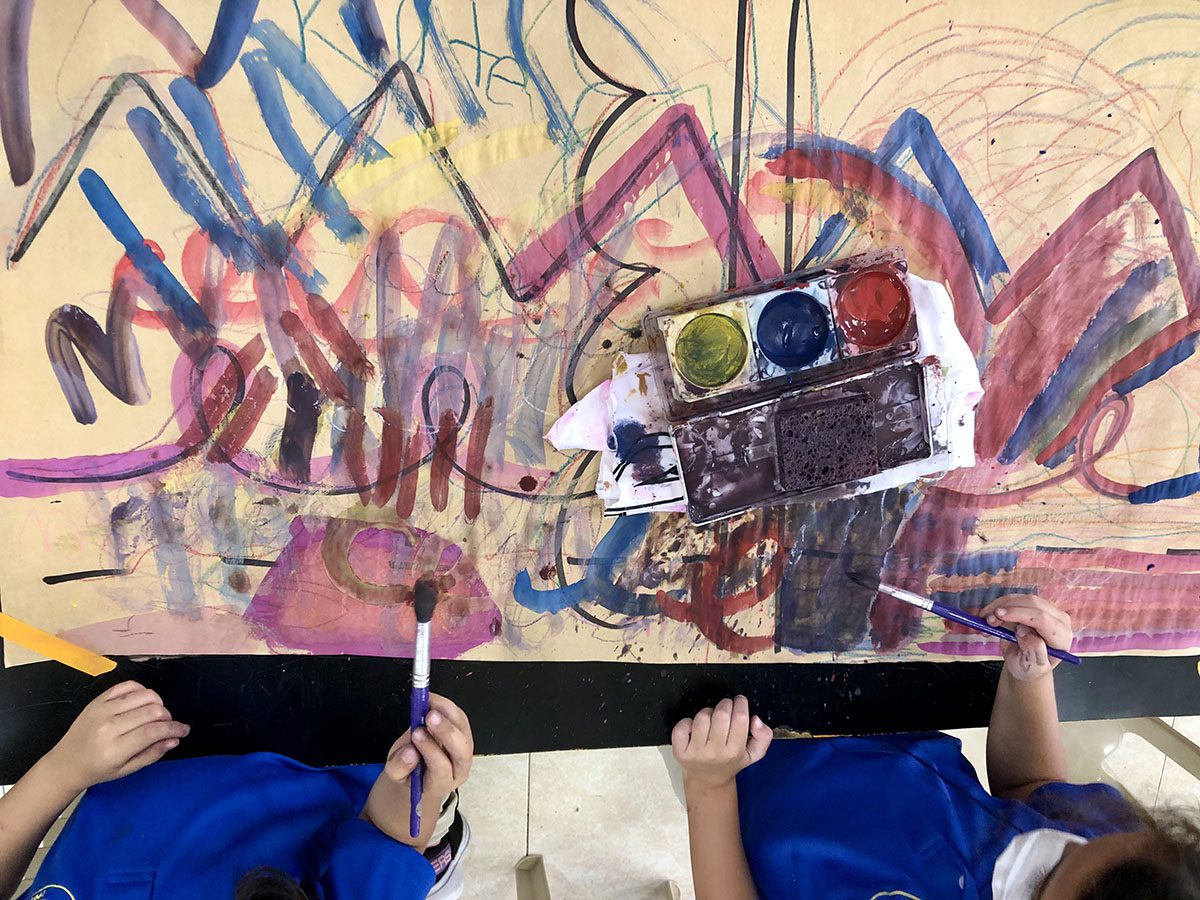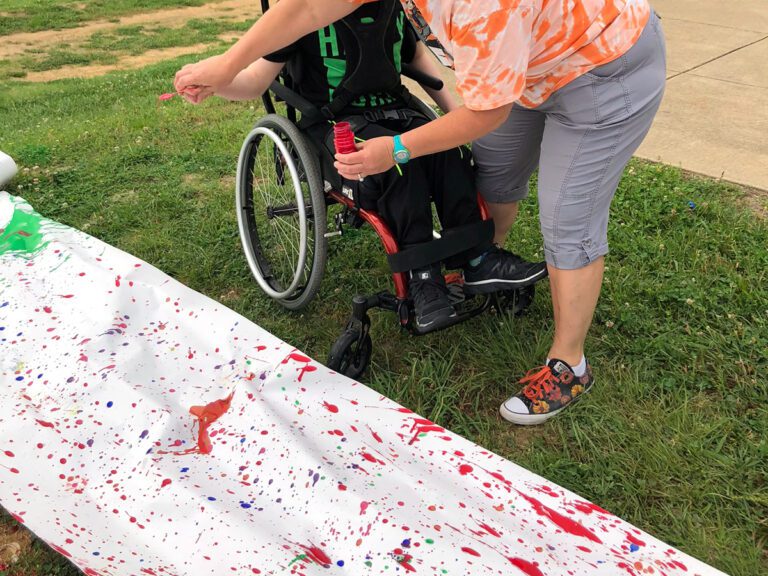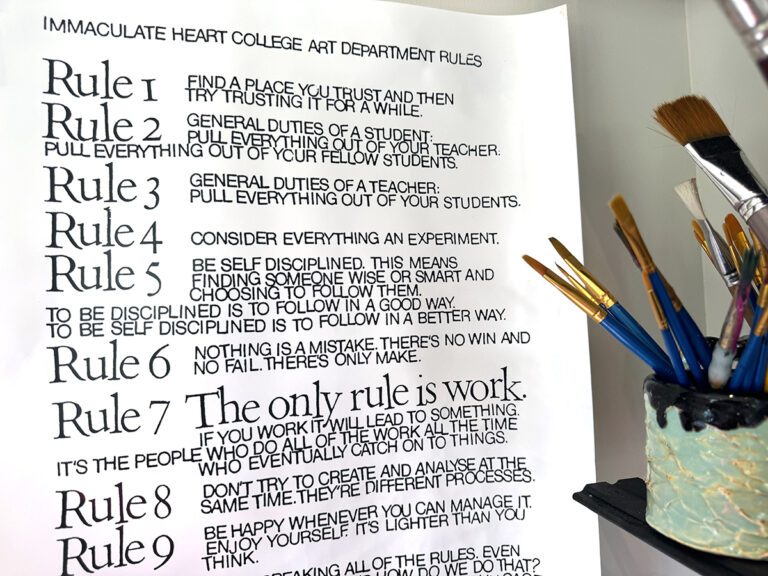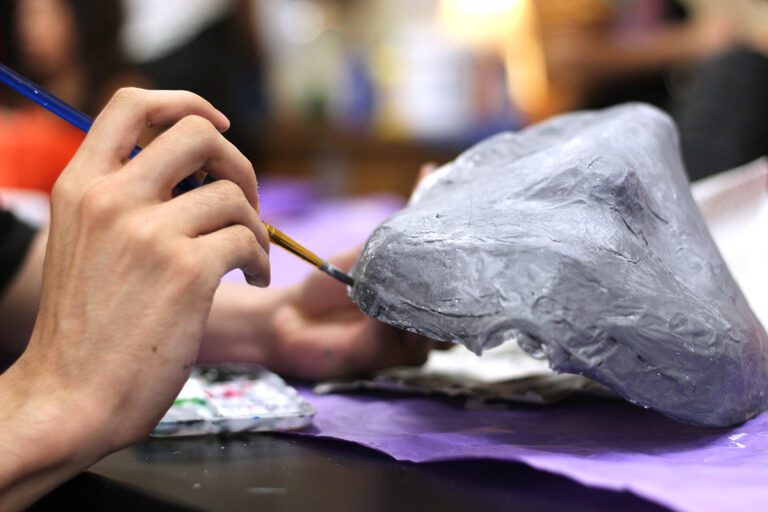Note: This article was written in collaboration with Janet Taylor.
TAB, IBL, STEAM, PBL—What’s with all of these acronyms? Art education theory is full of different approaches to teaching and learning about art. Though it can be hard to keep them straight, the good news is you have the creative freedom to mix and match approaches. Keep reading to discover the perfect blend of popular art education approaches to bring to your teaching to enhance learning. It’s time to give your pedagogy and methodology a shake-up!
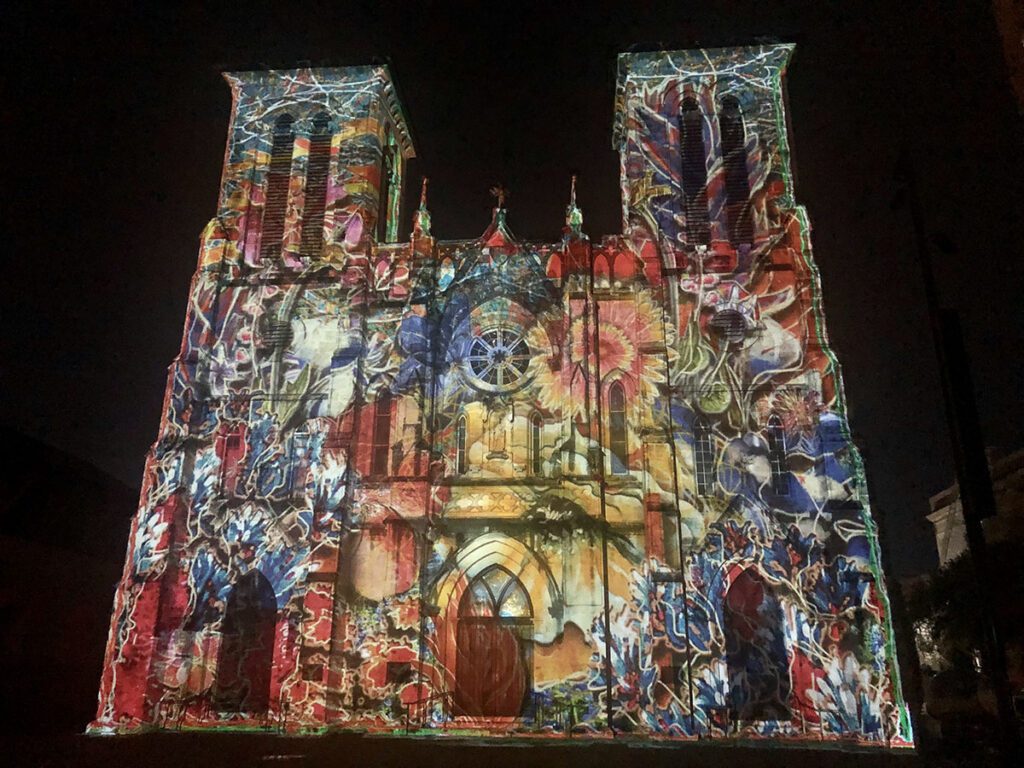
Pedagogy vs. Methodology
Your pedagogy and methodology play a crucial role in how you approach teaching and learning in your art room. At the heart of teaching, pedagogy is the art, science, or profession of teaching. Your pedagogy determines the rules and principles that guide effective and efficient activities which lead to learning in your art room.
Your pedagogy is a marriage of what (philosophy) and how (methodology) you teach. Your philosophy dictates what you believe as an art educator, how you see your students, and the purpose of education. Your methodology is how you carry out your pedagogy with specific strategies and activities.
Figure out the unique combination of pedagogy and methodology to fit the needs in your art room. Here’s how to get started.
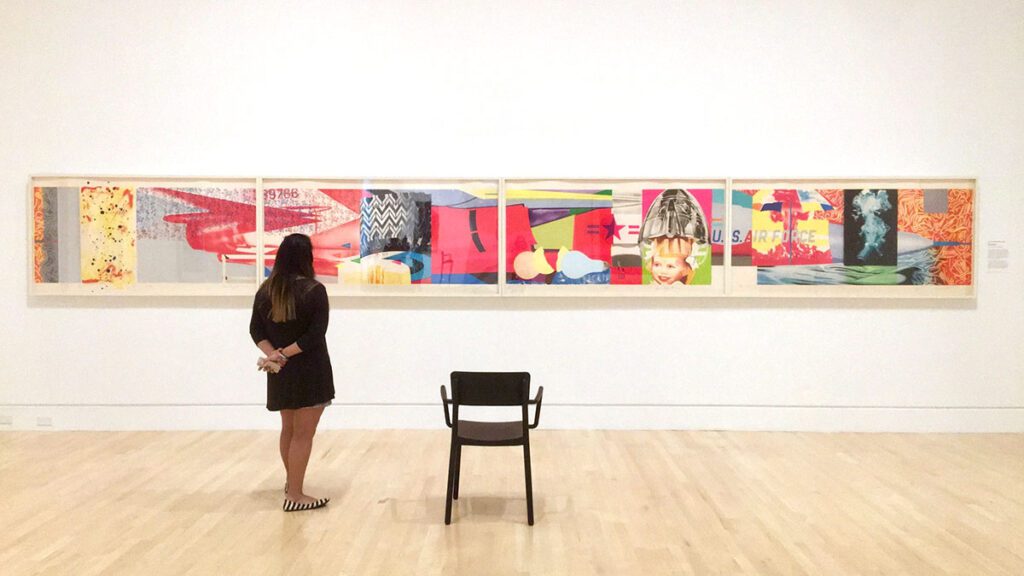
Determine Your Teaching Approach
Traditionally, there are five main pedagogical approaches to teaching and learning. These are great starting points as you establish your approach.
Here are the five main pedagogical approaches:
- Constructivist
Learners are actively involved in the learning process. They create their own meaning and knowledge of the material. - Collaborative
Multiple learners work together, like in small group instruction. They all contribute and help each other learn. - Inquiry-Based
Students address real-world problems by asking questions and doing further research. - Integrative
Using multiple academic disciplines and a common language, students engage with cross-curricular material. - Reflective
Both teachers and students reflect on lessons, projects, and assessments to see how to improve them in the future.
Because all classrooms, teachers, and students are different, choose which approach(es) best suits your needs and customize from there. Choosing multiple approaches and making adjustments will increase the likelihood of meeting more individual needs of your students. Ideally, your teaching approach will also integrate your passions.
As you consider customizing your teaching approach, consider the following questions:
- Who are your students?
- What do your school and community value?
- What do you value in the realm of art education?
- How are you aligning your approach with your school’s expectations?
- How do you integrate your passions with what your students need?
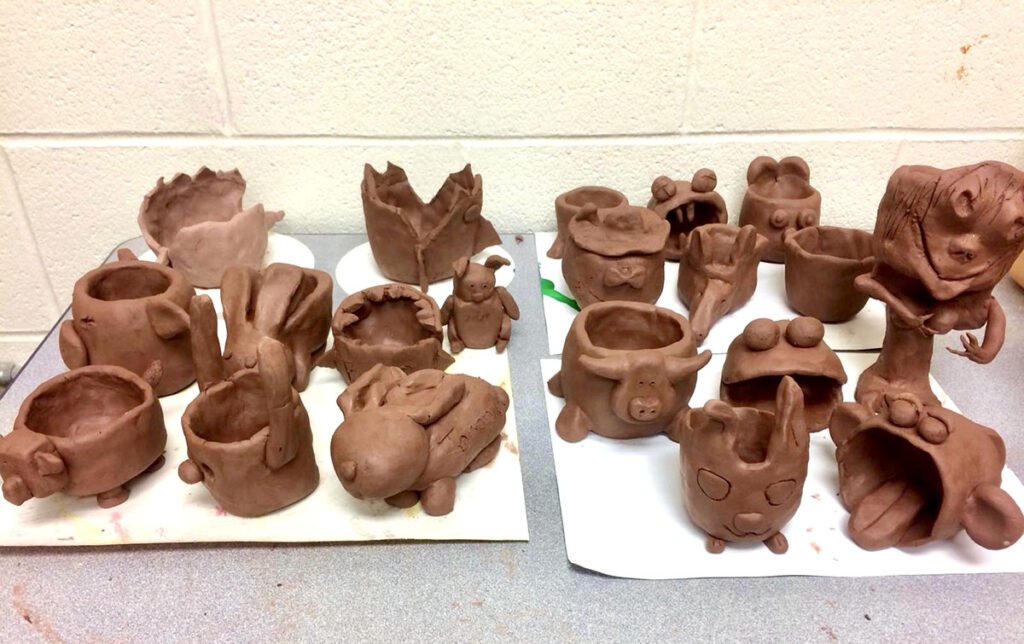
Popular Art Education Approaches
In addition to the five main pedagogical approaches above, there are several popular approaches specific to art education. Fuse the approaches and factors above with the additional ones listed below to make an art studio that fits the needs of you and your students. Keep reading for an overview of each with further resources.
Here are some popular art education approaches:
- Choice-Based/Teaching for Artistic Behavior (TAB)
- Inquiry-Based Learning (IBL)
- Play-Based Learning
- Project-Based Learning (PBL)
- Design Thinking
- STEAM
- Social Justice Learning
Mix and match your favorite art education approaches from the list below to make the most of teaching and learning in your art room.
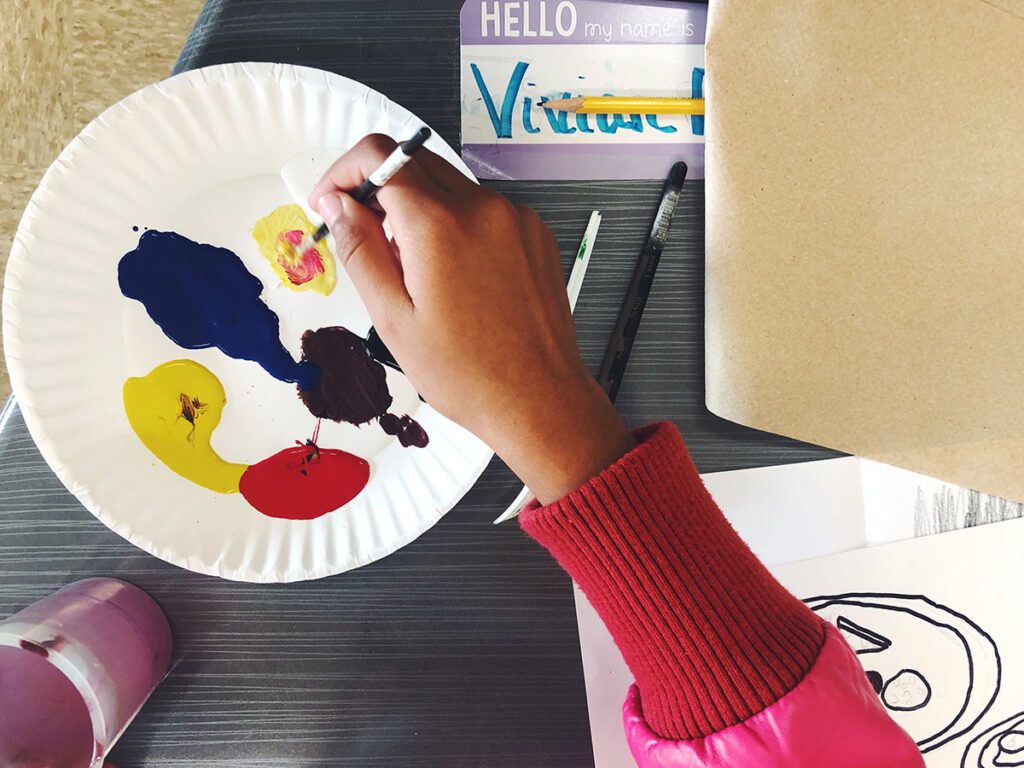
Choice-Based/Teaching for Artistic Behavior (TAB)
Teaching for Artistic Behavior (TAB) positions students as artists and considers the art room their studio. TAB art rooms have centers for artmaking where students determine what they want to learn. Choice-Based Art Education (CBAE) is one methodology that supports a TAB philosophy by offering student-directed components to learning. This approach aims to empower students to lead and direct learning.
Learn more about Choice and TAB by reading 6 Proven Reasons to Love Choice-Based Art and Try It in Your Art Room or taking the Choice-Based Art Education graduate course.
As you create lessons and units, consider ways students can drive their learning.
- Experiment with a one-day mini-lesson to engage TAB practices.
- Introduce an essential center to your students with these five steps.
- Watch the Increasing Choice at the Elementary Level Pack or the Planning For Choice at the High School Level Pack in PRO Learning.
Inquiry-Based Learning (IBL)
If you teach advanced artists in an International Baccalaureate program or Advanced Placement Art and Design, you’re familiar with Inquiry-Based Learning (IBL). However, IBL is for more than special programs or advanced students. Inquiry-Based Learning focuses on student curiosity to drive the curriculum. Instead of delivering content as a statement, the approach develops questions for students to investigate, research, and try. Students then go through an Inquiry Cycle that includes orientation, conceptualization, investigation, conclusion, and discussion.
Learn more about Inquiry-Based Learning by listening to Exploring IB Visual Arts, Part One (Ep. 312) and Part Two (Ep. 313), or watching the Helping Students Create a Body of Work Pack in PRO Learning.
As you create lessons and units, pique students’ curiosity.
- Let themes, big ideas, and essential inquiries drive your projects.
- Analyze artworks in a comparative study to practice asking and answering questions.
- Adopt process portfolios as a summative assessment strategy.
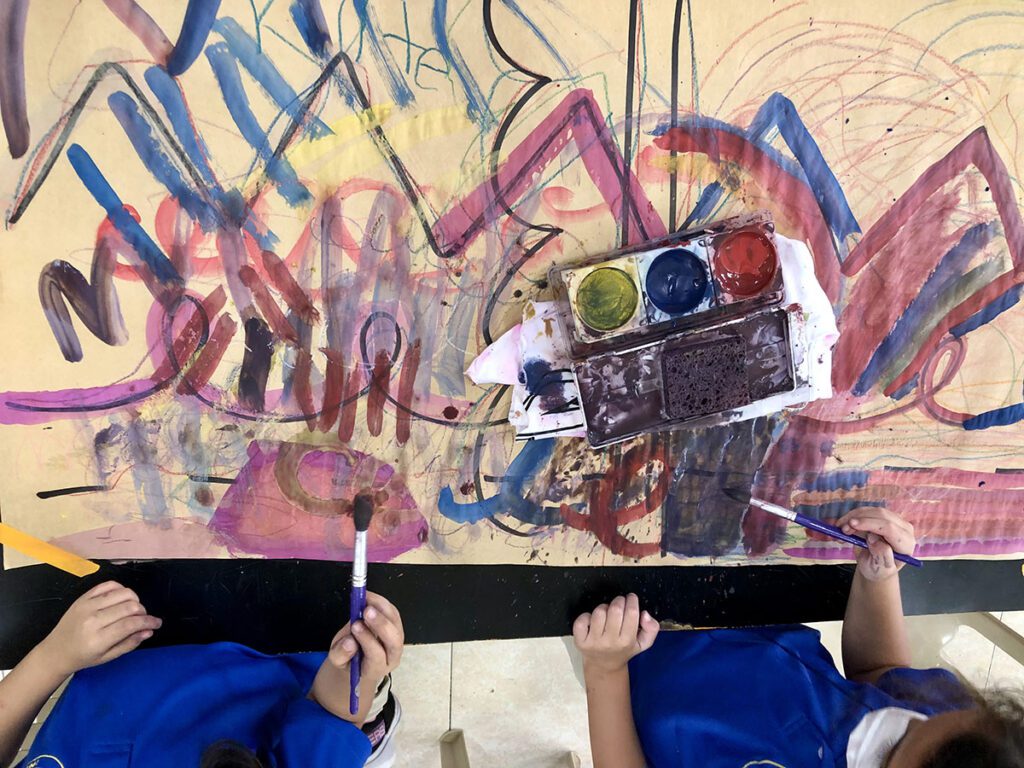
Play-Based Learning
Play-based learning entails using play to explore ideas, experiment with materials, and create new understandings. While play is beneficial for all levels, this approach is primarily found in early childhood education. Play-based learning is distinct from a general sense of play in that learning is fundamental to any activity. Open-ended invitations to free or guided play capitalize on young students’ natural curiosity and ability to make discoveries. In the art room, students engage with exciting materials and construct meaning through imagination and creativity.
Learn more about play-based learning and other early childhood approaches by watching the YouTube mini-series, 1-2-3 A-R-T, or taking the Art and Early Childhood Education graduate course.
As you create units and lessons, leave ample room for free and guided play.
- Explore color theory by having students mix colors of modeling compound.
- Select certain materials for students to experiment with for the day.
- Use a read-aloud to introduce foundational skills before individual exploration.
Project-Based Learning (PBL)
Project-Based Learning (PBL) provides real-world contexts to situate learning. Students solve problems adult professionals face, often with involvement from the community. In the PBL approach, teachers move from directors to facilitators of learning. The learning community poses a driving question for the problem at hand, consults experts, and conducts research as part of the learning process.
Learn more about PBL and community engagement by reading How to Use Essential Questions to Guide Online Learning or watching the Partnering With Your Local Art Community Pack in PRO Learning.
As you create lessons and units, provide real-world problems for students to explore and solve.
- Invite a community artist to lead a workshop on the creative process.
- Integrate essential questions into your project introductions.
- Visit a museum to interact with real-world art professionals.
Design Thinking
Design Thinking is an iterative process in which students seek to understand users, challenge assumptions, redefine problems, and create innovative solutions they can prototype and test. The goal is to identify alternative strategies and solutions over time. Through data gathering, idea generation, and testing with users, design thinking helps students think outside of the box.
Learn more about Design Thinking by listening to Forget Thinking Like an Artist, Start Thinking like a Designer (Ep. 024), or watching the Infusing Design Thinking Pack in PRO Learning.
As you create lessons and units, build opportunities for students to engineer their solutions.
- Issue an introductory fashion design challenge with staple art supplies.
- Participate in group brainstorming to practice collaboration.
- Engage the Design Thinking process by revising artwork based on feedback.

STEAM
STEAM education is an integrative, interdisciplinary approach to learning that uses science, technology, engineering, the arts, and mathematics. These are access points for guiding student inquiry, dialogue, and critical thinking. This approach enhances students’ creativity, problem-solving skills, and interest in core fields.
Learn more about STEAM by reading An Art Teacher’s Guide to Understanding STEAM Education or listening to The Why and How of Elementary STEAM Education (Ep. 058).
As you create lessons or units, consider how to integrate other subjects.
- Set up four mini STEAM stations to introduce the approach in one class.
- Try a lesson from the Integrating STEAM Collection in FLEX Curriculum.
- Join forces with other teachers to design a STEAM-based course.
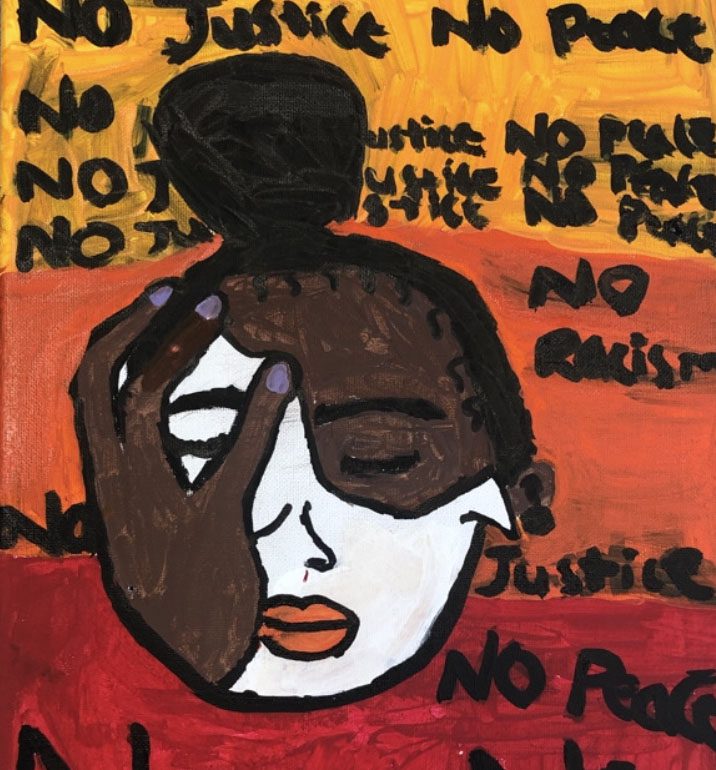
Social Justice Learning
Social Justice Learning creates opportunities for students to deepen and enrich their understanding by considering the world, their community, and their societal place. The goal is to provide safe and equitable classrooms, discussions, and assignments where all students feel included and have a voice.
Learn more about Social Justice Learning by reading How to Help Students Process, Reflect, and Enact Change or Do Religion and Politics Belong in the Art Room?
As you create lessons and units, include space for self-reflection and advocacy.
- Integrate more diverse artists into your curriculum to increase representation.
- Prompt students to use visual journaling to process a social issue.
- Try a lesson from the Freedom and Social Change Collection in FLEX Curriculum.
Finding the right combination of pedagogy, methodology, and popular art education approaches to promote learning in your art room is no small task. Start by picking one or two traditional pedagogical approaches that resonate with you, like Constructivist or Inquiry-Based. From there, identify a few popular art education approaches that align with your chosen pedagogies. For example, you could select IBL or Play-Based Learning. Pick elements from each that interest you and meet the needs of your students. Try out strategies and reflectively adjust when necessary. In no time, you will develop the perfect mix to keep your curriculum and instruction focused on what truly matters to you and your students.
Which approaches from the list are you excited to try in your art room this year?
Share your teaching philosophy in a couple of sentences!
Magazine articles and podcasts are opinions of professional education contributors and do not necessarily represent the position of the Art of Education University (AOEU) or its academic offerings. Contributors use terms in the way they are most often talked about in the scope of their educational experiences.
